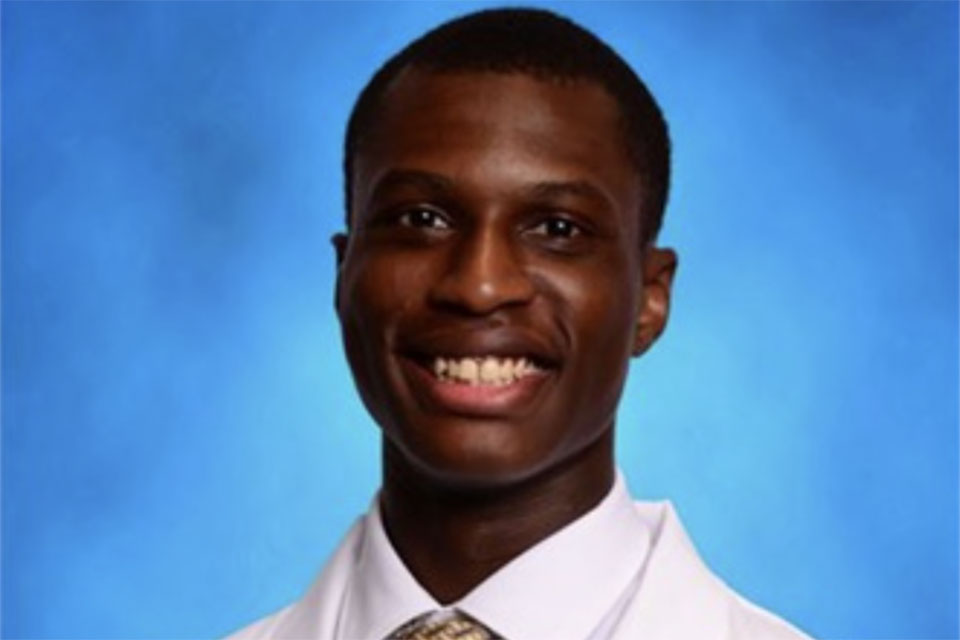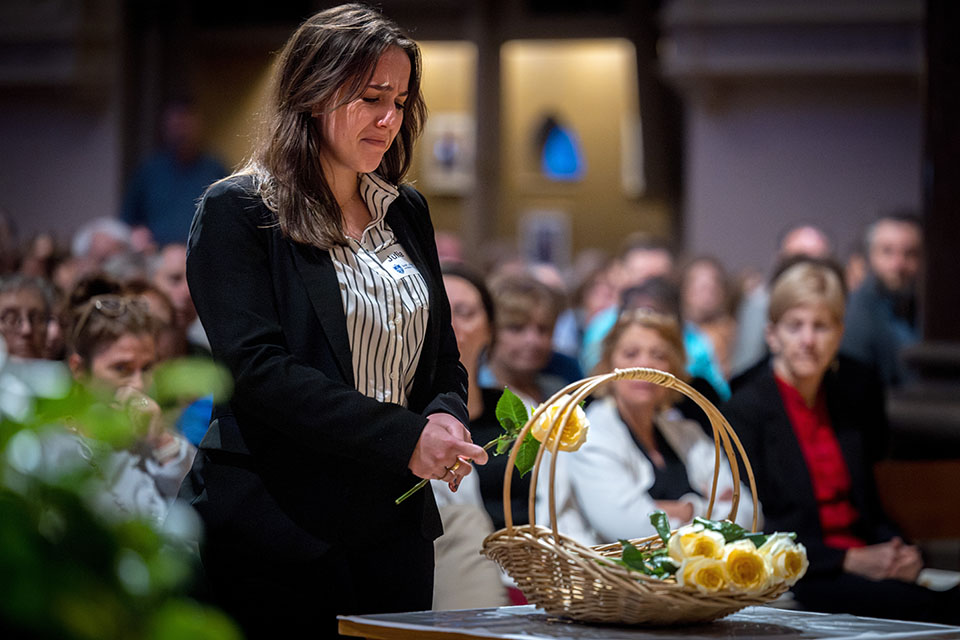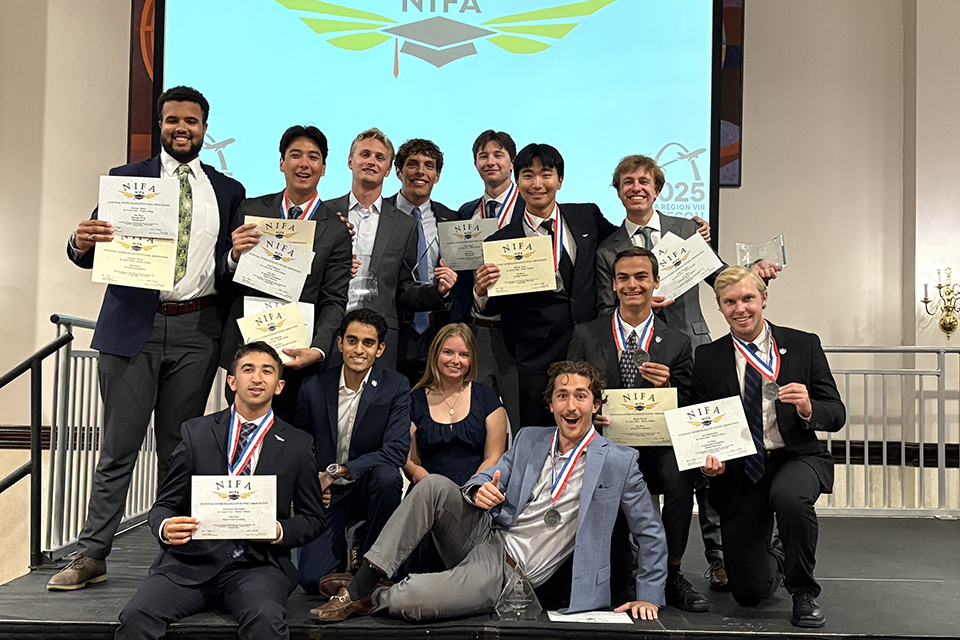Sawday Shares Significance of Nothingness at James Russell Lowell Prize Ceremony
01/16/2025
A lot can be said about the blank spaces in literature.
That was one of the messages from Jonathan Sawday, Ph.D., SLU’s Walter J. Ong, S.J. Chair in Humanities in the English Department. Wednesday afternoon, a standing-room-only crowd gathered in the Pere Marquette Gallery to hear Sawday’s thoughts on his award-winning text, Blanks, Print, Space, and Void in English Renaissance Literature: An Archaeology of Absence.
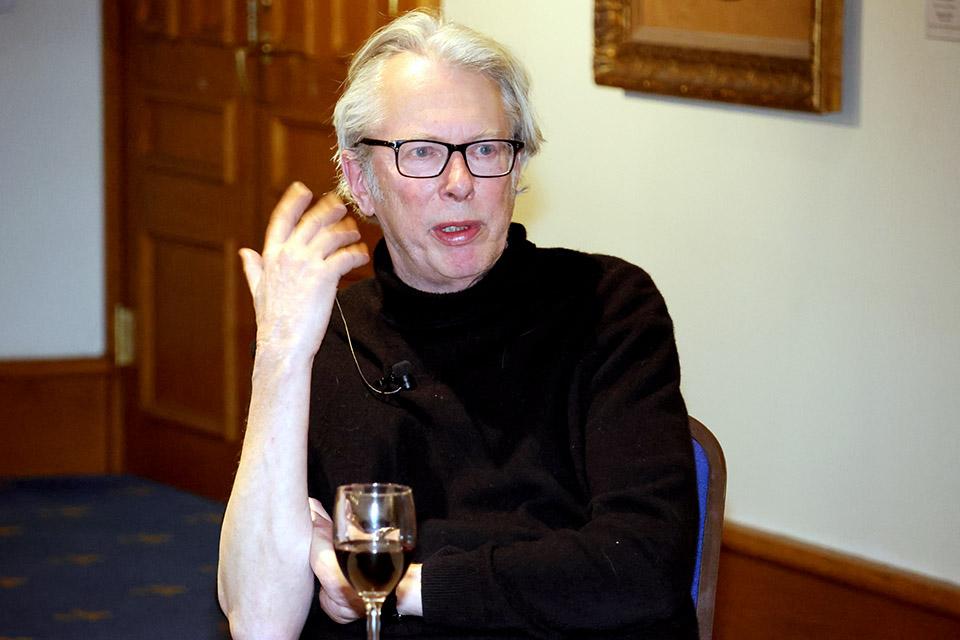
Jonathan Sawday, Ph.D., responds to a question during an event on Wednesday, Jan. 15. Photo by Joe Barker.

SLU President Fred P. Pestello, Ph.D., praised James Russell Lowell Prize awardee Jonathan Sawday, Ph.D., during an event Wednesday, Jan. 15. Photo by Joe Barker.

Jonathan Sawday, Ph.D., and chair of SLU's English Department, Brian Yothers, Ph.D., discuss Sawday's work at an event on Wednesday, Jan. 15. Photo by Joe Barker.
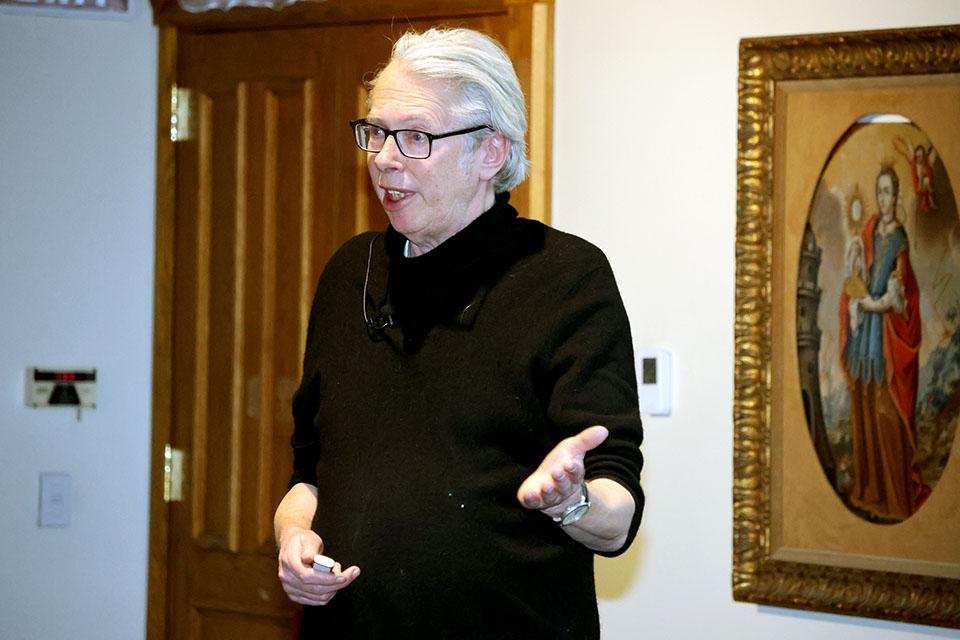
Jonathan Sawday, Ph.D., speaks at a reception on Wednesday, Jan. 15. Photo by Joe Barker.

Jonathan Sawday, Ph.D., talked about his award-winning book, Blanks, Print, Space, and Void in English Renaissance Literature: An Archaeology of Absence, at an event on Wednesday, Jan. 15. Photo by Joe Barker.
The event was a celebration of Sawday’s recent reception of the James Russell Lowell Prize for the most outstanding book published in 2023, for his book published by Oxford University Press. The prize is the Modern Language Association’s (MLA) top honor and is awarded each year to an outstanding book that is a literary or linguistic study, a critical edition of an important work, or a critical biography written by a member of the association.
Sawday is the 55th recipient of the award, and the first from SLU to receive the honor.
“This is an extraordinary achievement,” said SLU President Fred P. Pestello, Ph.D. “Truly, this is something special. When Jonathan talks about this truly magnificent book, he often quips that he wrote 600 pages about nothing. It’s a very good line, but this achievement signifies quite a lot more than nothing.”
Sawday opened his remarks by talking about one of his inspirations for the project — the famous cut-to-black series finale of the TV show “The Sopranos.” Sawday talked about how that famous black screen, a void, actually said something.
“I was watching back in the U.K. and I thought it was just amazing,” Sawday said. “. . . It was tracing people’s response to this blackness that got me thinking there’s something interesting going on here, something worth writing about.”
Sawday noted that his book connects many aspects of contemporary culture with the advent of the transformative technology of print in the sixteenth and seventeenth centuries.
“It’s a book about history, a book about print history from the first age of print,” he said.
Blank spaces evolved over time. Sawday noted that the earliest printing was done without spaces between words — every word was just mashed together. This led to reading out loud. Once printers started separating words with spaces, silent reading began, some historians believe.
Blank spaces also could tell a story by themselves. In one example, Sawday showed an early map of North America with large swaths of empty spaces over the continent. He pointed out that this space was not blank — it was filled with wildlife, nature, and notably people. However, in trying to promote the new world to Europeans, map makers sold settlers visions of filling those voids.
“America is being shown as vacant, empty,” he said. “That sort of functions a bit like a vacuum. There is a political point being made — this place is empty, come here.”
Sawday connected things like modern tax forms to early documents. The modern printed “blank form,” devised with spaces that must be filled in by the user, and which first began to be issued in enormous numbers in the sixteenth century, is part of what the book calls the “rhetoric of the blank.”
Eventually, writers and poets started playing with the blank spaces. Sawday pointed to one example where an author used marks to mimic blood drops falling on a page.
“Those little spots on the page are a representation of blood, Christ’s blood, being imagined to fall on the page,” he said. “The reader is being drawn in through this manipulation of time and space.”
Sawday talked about censorship and also the connection between printing and race — he noted many modern ideas about “race” were shaped, in part, by the oscillation between black and white which was the product of the “inky” technology of print.
Sawday closed the celebration by taking questions from Brian Yothers, Ph.D., professor and chair of the Department of English at SLU, and members of the audience.
Sawday thanked the SLU community for making the book possible.
“This book is a very SLU book in the sense that so many of my colleagues helped me to write it,” Sawday said.
Latest Newslink
- SLU, Collegiate Strengthen High School-to-Medical School PathwayA partnership between Saint Louis University School of Medicine and local high school Collegiate School of Medicine and Bioscience serves as a model for how early exposure and mentorship can transform lives—and communities— as SLU invests in future physicians.
- St. Louis Literary Award Discussion with Director Mira Nair Moved to November 13Saint Louis University will hold a Zoom discussion with "The Namesake" director Mira Nair on Thursday, Nov. 13. "The Namesake" is based on the novel of the same name by Pulitzer Prize-winning author Jhumpa Lahiri, the 2026 St. Louis Literary Award honoree.
- Two Companies Led By Saint Louis University Alumni Awarded 2025 Arch GrantsTwo firms led by Saint Louis University alumni received 2025 Arch Grant awards. GenAssist, led by Gabe Haas (SSE ’20) and co-founder Joe Beggs, and Decodable Reads, led by Paul Heinemann (A&S ’18) and Joe de Lorimier (CSB ’19), are part of a cohort of 19 new businesses receiving Arch Grants funding this year. GenAssist was one of four companies in SLU’s inaugural New Venture Accelerator (NVA) cohort in 2024.
- SLU Students Commemorate Legacy of Gift Body Donors at Memorial ServiceStudents from Saint Louis University’s School of Medicine Class of 2029, along with graduate students from the SOM's Master of Anatomy program and the Doisy College of Health Sciences, recently gathered for an interfaith memorial service to honor 355 individuals who generously donated their bodies to SLU’s Gift Body Program.
- SLU's Flying Billikens Secure Spot in 2026 National Intercollegiate Flying CompetitionA team of aviation science students from Saint Louis University’s School of Science and Engineering placed high enough this weekend to secure a spot in the 2026 National Intercollegiate Flying Association (NIFA) Competition. This is the third straight year the team has qualified for the national competition.
- Frequent Heartburn May Signal Risk for Alcohol Use Disorder, SLU Study FindsA new study from Saint Louis University reveals that individuals with frequent heartburn—clinically known as gastroesophageal reflux disease (GERD)—have a higher chance of being diagnosed with alcohol use disorder within two years. Researchers are urging primary care providers to screen GERD patients for alcohol misuse during routine visits.








